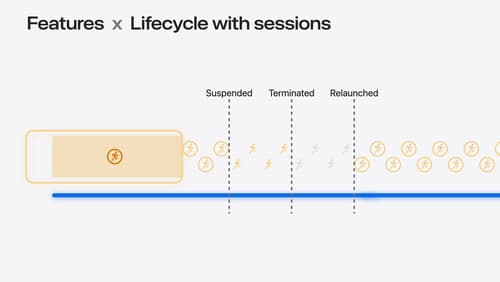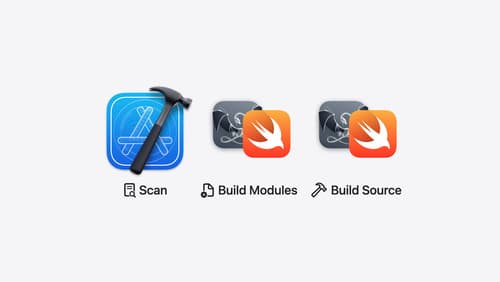Background tasks
Asked on 2024-08-16
1 search
Background Tasks in WWDC 2024
At WWDC 2024, several sessions touched on the topic of background tasks and concurrency, particularly in the context of app development and system features.
-
Location Authorization and Background Tasks:
- In the session titled "What’s new in location authorization," it was discussed how apps can manage background tasks related to location services. The session emphasized the importance of maintaining session objects even when an app is running in the background or has been terminated. This ensures that the app can resume or relaunch when new information is ready for delivery, provided the app's authorization allows it. This is crucial for features like exercise tracking, where the app needs to continue functioning in the background (What’s new in location authorization).
-
Concurrency in Swift:
- The session "A Swift Tour: Explore Swift’s features and design" introduced Swift's concurrency model, which is essential for handling background tasks efficiently. Swift uses tasks as the fundamental unit of concurrency, allowing for independent concurrent execution contexts. This is particularly useful for performing asynchronous operations, such as reading from disk or handling network requests, without blocking the main thread (A Swift Tour: Explore Swift’s features and design).
-
Vision Framework Enhancements:
- In "Discover Swift enhancements in the Vision framework," the use of concurrency to optimize image processing tasks was highlighted. By using task groups, developers can perform multiple requests in parallel, which is beneficial for processing images in the background without overwhelming the system's resources (Discover Swift enhancements in the Vision framework).
These sessions collectively provide insights into how Apple is enhancing the capabilities for managing background tasks, particularly through improved concurrency models and system features that support seamless app functionality even when not in the foreground.

What’s new in location authorization
Location authorization is turning 2.0. Learn about new recommendations and techniques to get the authorization you need, and a new system of diagnostics that can let you know when an authorization goal can’t be met.

Demystify explicitly built modules
Explore how builds are changing in Xcode 16 with explicitly built modules. Discover how modules are used to build your code, how explicitly built modules improve transparency in compilation tasks, and how you can optimize your build by sharing modules across targets.

A Swift Tour: Explore Swift’s features and design
Learn the essential features and design philosophy of the Swift programming language. We’ll explore how to model data, handle errors, use protocols, write concurrent code, and more while building up a Swift package that has a library, an HTTP server, and a command line client. Whether you’re just beginning your Swift journey or have been with us from the start, this talk will help you get the most out of the language.
